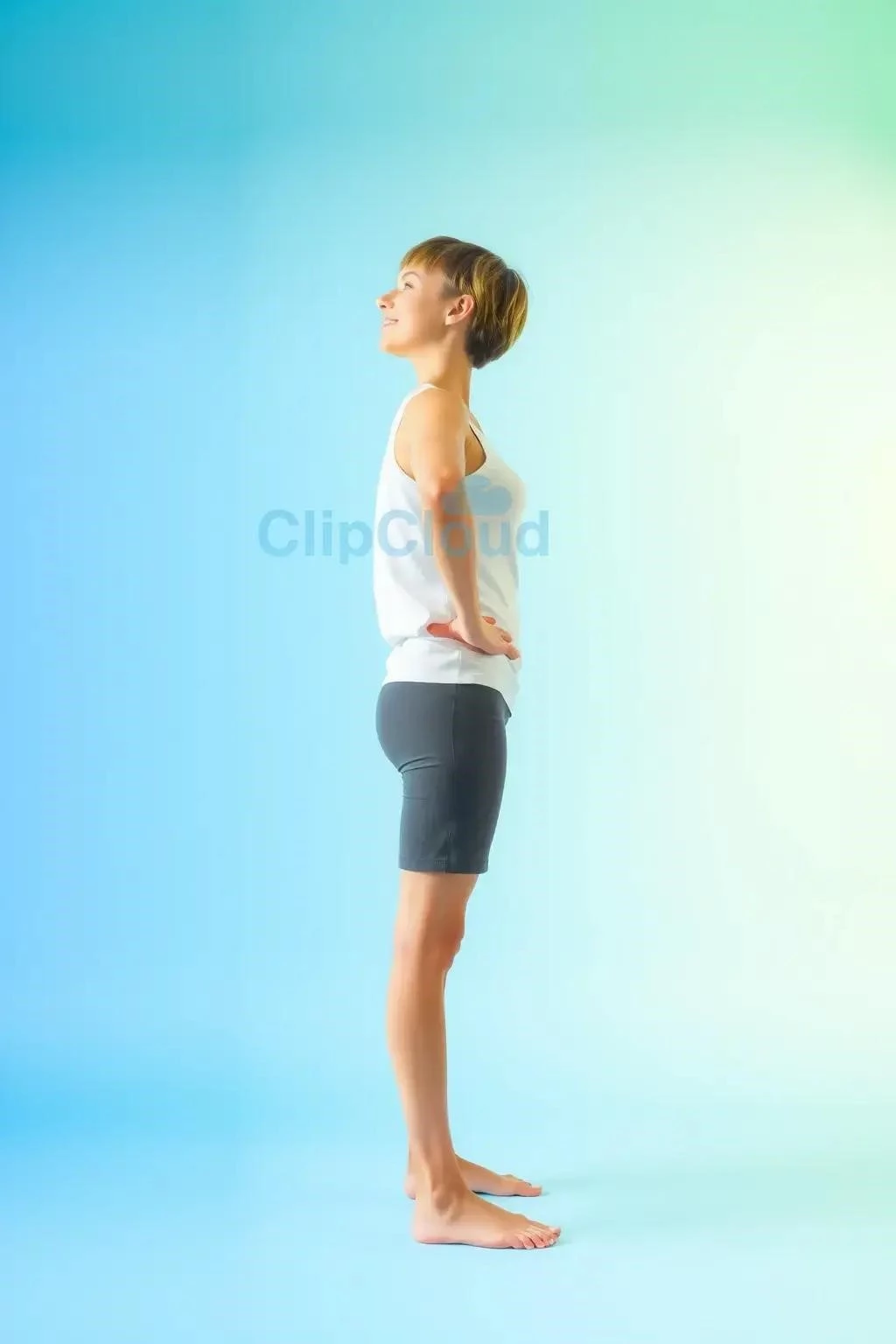The Mind-Body Connection: How Posture Influences Mood
The link between our physical posture and mental state is more profound than we often realize. Slouching and slumped postures can reinforce feelings of negativity‚ low self-esteem‚ and even contribute to anxiety. Conversely‚ adopting an upright and open posture can significantly shift our mood towards positivity. Think about it: shoulders back‚ chin up – this posture not only projects confidence but also cultivates it internally. By opening up the chest and maintaining proper spinal alignment‚ we allow for deeper breathing‚ which can help reduce stress and promote feelings of calm and well-being. This mind-body connection highlights the importance of posture in shaping our emotional landscape.
Gut Feelings: The Link Between Posture and Digestion
Believe it or not‚ the way you sit and stand can significantly impact your digestive health. Poor posture‚ particularly slouching‚ can compress your abdominal organs‚ restricting the space needed for optimal digestion. Imagine your digestive system as a complex network of organs working together to process food. When compressed by poor posture‚ this intricate system can’t function at its best. This compression can lead to a variety of digestive issues‚ including heartburn‚ indigestion‚ constipation‚ and even bloating.
Slouching forward compresses the stomach and intestines‚ hindering the natural flow of digestive juices and the movement of food through the digestive tract. This can slow down digestion‚ leading to uncomfortable symptoms like bloating and gas. Furthermore‚ restricted space in the abdomen can put pressure on the diaphragm‚ the muscle responsible for breathing‚ which can exacerbate acid reflux and heartburn. Imagine trying to inflate a balloon inside a small box – the restricted space hinders the balloon’s expansion‚ similar to how poor posture restricts the diaphragm’s movement.
Conversely‚ maintaining good posture‚ with an upright spine and open chest‚ creates ample space for your digestive organs to function efficiently. This allows for proper movement of food through the digestive tract‚ promoting regular bowel movements and reducing the likelihood of constipation. An upright posture also ensures that the diaphragm can move freely‚ facilitating proper breathing and reducing the risk of acid reflux. Think of it as creating a spacious environment for your digestive system to thrive‚ like giving that balloon ample room to inflate fully.
Furthermore‚ good posture supports the proper functioning of the abdominal muscles‚ which play a vital role in digestion. These muscles assist in the process of peristalsis‚ the wave-like contractions that move food through the digestive tract. When these muscles are weakened due to poor posture‚ peristalsis can become sluggish‚ contributing to digestive problems. By strengthening your core muscles and maintaining good posture‚ you support efficient peristalsis and promote optimal digestion.
In addition to the mechanical benefits‚ good posture can also influence digestion through its impact on the nervous system. The vagus nerve‚ a key player in the parasympathetic nervous system (responsible for rest and digest functions)‚ can be negatively affected by poor posture. Slouching can compress the vagus nerve‚ hindering its ability to regulate digestive processes. Maintaining good posture‚ on the other hand‚ allows the vagus nerve to function optimally‚ promoting healthy digestion and reducing stress-related digestive issues. By prioritizing good posture‚ you are essentially supporting the harmonious communication between your brain and gut‚ fostering a healthy and happy digestive system.
Energize Your Life: Posture’s Impact on Energy Levels
Ever notice how you feel more sluggish and tired when you’re slumped over? It’s not just in your head. Posture plays a surprisingly significant role in your energy levels. When you slouch‚ you’re essentially compressing your lungs and restricting your breathing. This shallow breathing limits the amount of oxygen reaching your cells‚ leading to fatigue and decreased energy. Imagine trying to run a marathon while breathing through a straw – your body simply wouldn’t receive the oxygen it needs to perform optimally.
Good posture‚ on the other hand‚ opens up your chest and allows for deeper‚ more efficient breathing. This increased oxygen intake fuels your cells‚ providing a natural energy boost. Think of it like opening a window and letting fresh air invigorate a stuffy room. With proper posture‚ your body receives the oxygen it needs to function at its peak‚ leading to increased energy and vitality throughout the day. This improved breathing also enhances circulation‚ delivering essential nutrients and oxygen to your muscles and organs‚ further boosting your energy levels.
Beyond breathing‚ good posture also reduces strain on your muscles and joints. When you slouch‚ your muscles have to work harder to support your body‚ leading to muscle fatigue and decreased energy. Maintaining proper alignment‚ however‚ distributes your weight evenly‚ reducing the strain on your muscles and allowing them to work more efficiently. This reduced strain conserves energy‚ leaving you feeling more energized and less fatigued.
Furthermore‚ good posture can have a positive impact on your nervous system‚ which plays a crucial role in regulating energy levels. Slouching can compress nerves‚ hindering their ability to transmit signals effectively. This can lead to feelings of fatigue and sluggishness. Maintaining an upright posture‚ however‚ allows your nervous system to function optimally‚ promoting efficient communication throughout your body and contributing to increased energy and alertness.
Finally‚ the psychological benefits of good posture can also contribute to increased energy. Standing tall and maintaining an open posture can boost your confidence and mood‚ which can have a positive ripple effect on your energy levels. When you feel good about yourself‚ you’re more likely to engage in activities and pursue your goals with enthusiasm and energy. So‚ by simply improving your posture‚ you can unlock a hidden source of energy and vitality‚ enhancing your overall well-being and performance throughout the day. Embrace the power of good posture and experience the invigorating difference it can make in your life.
Practical Posture: Tips for Improvement in Daily Life
Improving your posture doesn’t require drastic measures; small‚ consistent changes can make a big difference. Start by becoming more mindful of your posture throughout the day. Periodically check in with yourself: Are your shoulders slumped? Is your chin jutting forward? Simply bringing awareness to your posture can prompt you to make adjustments and correct any slouching. Set reminders on your phone or computer to “check your posture” throughout the day. These small reminders can help you develop a habit of maintaining good posture.
Ergonomics play a crucial role in maintaining good posture‚ especially in today’s digital age where many of us spend hours sitting at desks. Ensure your workstation is set up to support good posture. Your chair should provide adequate back support‚ and your computer screen should be positioned at eye level to prevent you from hunching over. Adjust your keyboard and mouse so that your arms are at a comfortable angle and your wrists are straight. Consider using a standing desk or alternating between sitting and standing throughout the day to reduce prolonged periods of sitting.
Strengthening your core muscles is essential for supporting good posture. These muscles act as a natural corset‚ stabilizing your spine and helping you maintain an upright posture. Incorporate core-strengthening exercises into your routine‚ such as planks‚ bridges‚ and bird-dogs. Even simple exercises like these can significantly improve your core strength and support better posture.
Stretching tight muscles‚ particularly in the chest‚ shoulders‚ and hip flexors‚ can also improve posture. Tight chest muscles can pull your shoulders forward‚ while tight hip flexors can contribute to an anterior pelvic tilt‚ affecting your spinal alignment. Regular stretching can help lengthen these muscles‚ promoting better posture. Incorporate stretches like chest openers‚ shoulder blade squeezes‚ and hip flexor stretches into your routine.
Walking mindfully can also contribute to improved posture. Focus on lengthening your spine‚ keeping your shoulders relaxed and your head held high. Imagine a string attached to the top of your head gently pulling you upwards. Engage your core muscles as you walk to further support your posture. Paying attention to your posture while walking can translate into better posture in other activities throughout the day.
Finally‚ consider seeking professional guidance if you have persistent posture problems. A physical therapist or chiropractor can assess your posture‚ identify any underlying issues‚ and provide personalized exercises and stretches to address your specific needs. They can also offer valuable advice on ergonomic adjustments and lifestyle changes to support long-term posture improvement. By incorporating these practical tips into your daily life‚ you can cultivate better posture and reap the numerous benefits it offers for your physical and mental well-being.
Beyond the Basics: Exercises and Stretches for Optimal Posture
While maintaining good posture throughout the day is crucial‚ targeted exercises and stretches can further enhance your postural alignment and strength. These exercises focus on strengthening the muscles that support good posture‚ such as the core‚ back‚ and shoulders‚ while also stretching tight muscles that can contribute to poor posture‚ like the chest and hip flexors. Incorporating these exercises into your routine can help you achieve optimal posture and prevent postural problems.
Strengthening Exercises:
- Plank: This classic exercise strengthens your entire core‚ which is essential for supporting your spine and maintaining an upright posture. Hold a plank position‚ keeping your body in a straight line from head to heels‚ for 30-60 seconds.
- Bridge: This exercise targets your glutes and lower back‚ which are key for proper pelvic alignment and posture. Lie on your back with knees bent and feet flat on the floor. Lift your hips off the floor‚ squeezing your glutes at the top‚ and hold for a few seconds before lowering.
- Superman: This exercise strengthens your back muscles‚ helping to counteract the effects of slouching. Lie on your stomach with arms and legs extended. Simultaneously lift your arms‚ chest‚ and legs off the floor‚ engaging your back muscles. Hold for a few seconds before lowering.
- Rows: Using resistance bands or weights‚ rows strengthen your upper back and shoulder muscles‚ promoting better posture and shoulder alignment. Sit with good posture and pull the resistance band or weights towards your chest‚ squeezing your shoulder blades together.
Stretching Exercises:
- Chest Stretch: Stand tall with arms extended to the sides. Gently rotate your arms outwards‚ opening up your chest and stretching the pectoral muscles. Hold for 20-30 seconds.
- Shoulder Blade Squeeze: Sit or stand with good posture. Squeeze your shoulder blades together‚ as if trying to pinch a pencil between them. Hold for a few seconds before releasing.
- Hip Flexor Stretch: Kneel on one knee with the other foot forward. Gently push your hips forward‚ feeling a stretch in the front of your hip. Hold for 20-30 seconds and switch sides.
- Neck Stretches: Gently tilt your head to one side‚ bringing your ear towards your shoulder. Hold for 20-30 seconds and repeat on the other side. You can also gently rotate your head in a circular motion‚ both clockwise and counterclockwise.
Remember to consult with a healthcare professional or certified fitness trainer before starting any new exercise program. They can help you determine the most appropriate exercises for your individual needs and ensure you’re performing them correctly. By consistently practicing these exercises and stretches‚ you can strengthen the muscles that support good posture‚ improve your flexibility‚ and achieve optimal postural alignment for long-term health and well-being.





